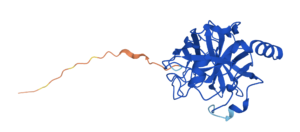The dirty little secret biotechs don’t tell you
 Do not feed the alligators is a common sign seen in the hammock areas of Florida where brackish fresh water abounds.
Do not feed the alligators is a common sign seen in the hammock areas of Florida where brackish fresh water abounds.
It has always amazed me people might even consider getting close enough to see them since common sense would tell you to beat a hasty and instant retreat from those big toothy maws!
Similarly in biotechland sometimes there are warning signs aplenty and yet people still ignore them, preferring to focus on the good.
Today’s story is a cautionary one where, much like with those “Do not feed the alligators” signs, researchers and investors might be wiser to heed certain warnings rather than focusing solely on what initially appears to be positive data.
Ignore the warning signs at your peril…
To continue reading our latest highlights on oncology new product development including commentary and analysis BSB subscribers can log-in or you can click to access the content.
This content is restricted to subscribers



 This is exactly what Arvinas have done with their novel PROTAC molecule, ARV–110, in men with advanced metastatic castration-resistant prostate cancer who have received prior hormonal therapy.
This is exactly what Arvinas have done with their novel PROTAC molecule, ARV–110, in men with advanced metastatic castration-resistant prostate cancer who have received prior hormonal therapy.
 It’s a Bank Holiday weekend on both sides of the pond, which is always a good excuse for some shorter snippets as everyone will be enjoying the break outside, weather permitting!
It’s a Bank Holiday weekend on both sides of the pond, which is always a good excuse for some shorter snippets as everyone will be enjoying the break outside, weather permitting!
 There’s nothing better than seeing good news in the early morning email alerts I have set up on cancer research!
There’s nothing better than seeing good news in the early morning email alerts I have set up on cancer research! Today, it was the turn of Astellas and Medivation to announce the results of the TERRAIN study, which is a primarily European phase 2 trial that began in March 2011 in the prechemotherapy setting for castrate resistant prostate cancer (CRPC). The trial met its primary endpoint of progression free survival (PFS).
Today, it was the turn of Astellas and Medivation to announce the results of the TERRAIN study, which is a primarily European phase 2 trial that began in March 2011 in the prechemotherapy setting for castrate resistant prostate cancer (CRPC). The trial met its primary endpoint of progression free survival (PFS).